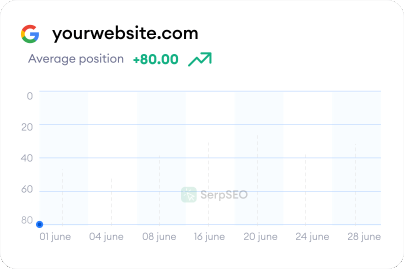Website traffic is a critical metric for measuring the success of online marketing efforts. For marketers and advertisers, high traffic numbers can translate to greater visibility, increased ad revenue, and improved search engine rankings. However, not all traffic is created equal. The rise of fake traffic, generated by bots, click farms, and automated software, presents a significant challenge. This artificially inflated traffic can skew analytics data, leading to misguided decisions and wasted marketing budgets. In this comprehensive guide, we will explore the nature of fake traffic, how to identify it, and the potential risks and advantages associated with its use. By understanding these factors, marketers and advertisers can better navigate the complexities of digital marketing and maintain the integrity of their website metrics.

.svg)
What is Fake Traffic?
Fake website traffic is web traffic generated by traffic bot, click farms, or automated traffic software rather than real human users. This kind of traffic is often used to artificially inflate website metrics, creating a misleading impression of a site's popularity. Fake traffic can make it appear that a website receives a high number of visitors, thus skewing analytics data. For marketers and advertisers, this presents a significant challenge as it complicates efforts to accurately measure website performance and audience engagement, the traffic metrics are completely modified. In digital marketing, distinguishing between real and fake web traffic is crucial to making informed decisions and optimizing ad spend effectively.
Identifying Bot Traffic which is fake
Identifying a source of fake traffic to your site requires careful analysis using tools like Google Analytics and Google Search Console. While it's not always straightforward, here are key indicators that can help spot fake traffic:
- Source of Traffic: Pay close attention to the traffic source. If a significant portion of your traffic is originating from a single IP address or a particular geographical area, it could be a sign of bot activity. Tools that track IP addresses can help identify and block bot traffic.
- Bounce Rate: Analyze the bounce rate. An extremely high bounce rate (over 90%) or a very low one (under 20%) could indicate fraudulent traffic. Bots often generate a high bounce rate as they do not engage with the site content meaningfully.
- Session Duration: Look at the average session duration. If the session duration is inconsistent or unusually short, it suggests invalid traffic. Bots typically spend very little time on a site, unlike human traffic that engages with multiple web pages.
- Page Views Per Session: Monitor the number of pages viewed per session. Typically, human users will visit four to five pages per session. Significant deviations from this pattern can be indicative of bot traffic.
The Role of Fake Traffic in Testing
Generating fake traffic can be useful for testing your website's functionality and ensuring that your analytics tools are capturing data correctly. Simple commands like curl or wget can generate hits to test server responses. For more sophisticated testing, headless browsers such as PhantomJS or Headless Chrome can simulate real user sessions and interactions. This process helps in verifying that your website can handle different types of traffic and that analytics data is being recorded accurately. It’s essential, however, to distinguish between testing traffic and attempting to artificially inflate your site metrics.
The Market for Fake Traffic
Many website owners and digital marketers consider buying fake traffic to boost their metrics. They often believe this tactic can create the illusion of a popular site, which might attract genuine visitors, improve search engine rankings, and enhance ad placements. However, this strategy is fraught with risks. Search engines are increasingly adept at identifying and penalizing websites that rely on invalid traffic. Furthermore, purchasing fake traffic can lead to wasted ad spend and distorted analytics data, making it difficult to evaluate the effectiveness of marketing campaigns accurately.
The good bot to buy fake traffic

The Pitfalls of Buying Fake Traffic
- Low-Quality Visits: Bots and click farms generate visits that don't engage with your content, resulting in low session durations and high bounce rates. This low-quality traffic is easily identifiable by analytics tools.
- Wasted Ad Spend: Utilizing paid traffic sources to drive fake visitors can lead to significant waste of marketing budgets. Advertisers pay for clicks that do not convert into meaningful engagement or sales.
- Search Engine Penalties: Search engines like Google are proficient at identifying and penalizing sites with high levels of invalid traffic. This can harm your SEO efforts and result in lower search engine rankings.
- Skewed Metrics: Fake traffic leads to less reliable analytics data, making it challenging to make informed marketing decisions. Accurate data is critical for understanding genuine user behavior and optimizing digital marketing strategies.
Advantages and Risks of Fake Traffic
While there can be some advantages to fake traffic, such as temporarily boosting metrics for better visibility, the risks often outweigh the benefits. Fake traffic might help in increasing the perceived popularity of a site temporarily, but it’s not a sustainable strategy. The long-term repercussions include potential penalties from search engines, wasted marketing budgets, and misleading analytics data. For sustainable growth, focusing on organic traffic and genuine user engagement is essential. Investing in quality content, SEO, and authentic marketing efforts will yield more reliable and lasting results.
Conclusion
In conclusion, while fake traffic can offer short-term gains by artificially inflating website metrics, it poses significant risks to the integrity of your analytics data and the long-term success of your digital marketing strategy. For marketers and advertisers, it is crucial to approach fake traffic with caution, prioritize quality traffic, and invest in organic growth strategies to ensure sustainable success in the competitive digital landscape. Accurate and reliable data is paramount for effective decision-making, and relying on genuine user engagement will always be more beneficial in the long run.
Summary
